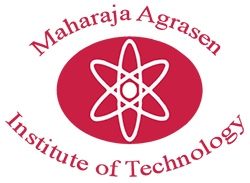IC ENGINE & GAS TURBINE AND AUTOMOBILE LAB

Lab Incharge : Dr. Desh Deep Gambhir
Lab Technician : Mr. Deepak Kumar
The Internal combustion engine & Gas Turbine Lab and Automobile Lab is designed to provide students with hands-on experience to conduct load tests and determine components of heat balance on single cylinder and multi cylinder Internal combustion Engine. This lab is an essential part of engineering education, ensuring students develop the skills needed to conduct load tests and to draw valve timing diagrams of a given Internal combustion Engine.
An Automobile Lab is a specialized facility for practical training and research in automotive engineering. It typically houses various equipment and setups to study and test different aspects of vehicles, including engine operation, electronics, maintenance, and testing.
Lab Overview:
The lab is equipped with the Cut section of Petrol engine and Diesel engine to draw a valve timing diagram. The lab is also equipped with a Single cylinder 4 stroke S.I engine with electrical loading.
Key Equipment in the Lab:
- Cut section of Petrol Engine and Diesel Engine – To draw Valve timing diagram of Internal combustion Engine.
- Petrol Engine Test Rig – To conduct load test and to determine components of heat balance
- Morse Test rig- To conduct load test and to determine components of heat balance on multi-cylinder 4 stroke petrol Engine.
- Model of Gas turbine Turbojet Engine-To understand working of Air propulsion system.
- MPFI
- Hydraulic Power Brake
- Carburetors, Gasoline Fuel Injection (MPFI), and Hydraulic Power Brake Systems for clear visualization of internal operations.
- Working Gear Boxes, including Synchromesh, Torque Converter, and Differential Gear Boxes, to study power transmission and control mechanisms.
- Steering System Models to analyze directional control in vehicles.
- Clutches including Single plate and Centrifugal Clutch and One-Way Free Wheel Clutch for understanding torque transfer between engine and gearbox.
- Actual Engine Units, such as an Esteem 1000cc engine, Maruti 800 crankshaft with piston, and Maruti 800 gear box with differential to practice dismantling and assembling tasks.
- Tyre and Wheel Assembly, allowing students to explore tyre behavior, material properties, and alignment.
- Solex Carburetor to support learning of historical fuel systems and their evolution.
Learning Objectives:
By the end of this course, students will be able to:
-
Draw the valve timing diagram for a given internal combustion engine based on its operation cycle.
-
Perform thermodynamic analysis of gas power cycles and their modifications.
-
Calculate performance parameters of internal combustion engines and prepare a complete heat balance sheet.
-
Explain the working principles of internal combustion engines and gearboxes.









